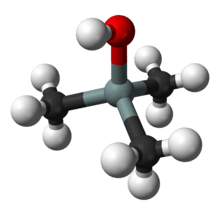Magic sand
Magic sand is a toy made from sand coated with a hydrophobic compound. The presence of this hydrophobic compound causes the grains of sand to adhere to one another and form cylinders (to minimize surface area) when exposed to water. When the sand is removed from water, it is completely dry and free flowing.

These properties are achieved with ordinary beach sand, which contains tiny particles of pure silica, and exposing it to vapors of trimethylsilanol (CH3)3SiOH, an organosilicon compound. Upon exposure, the trimethylsilane compound bonds to the silica particles while forming water. The exteriors of the sand grains are thus coated with hydrophobic groups.
Magic sand was originally developed to trap ocean oil spills near the shore. This would be done by sprinkling Magic sand on floating petroleum, which would then mix with the oil and make it heavy enough to sink. Due to the expense of production, it is not being used for this purpose. It has also been tested by utility companies in Arctic regions as a foundation for junction boxes, as it never freezes. It can be also used as an aerating medium for potted plants.
Magic sand is made in blue, green, or red in colors but appears silvery in water because of a layer of air that forms around the sand, making it unable to get wet.
The earliest reference to waterproof sand is in the 1915 book 'The Boy Mechanic Book 2' published by Popular Mechanics. The Boy Mechanic states waterproof sand was invented by East Indian magicians. The sand was made by mixing heated sand with melted wax. The wax would repel water when the sand was exposed to water.[1]
See also
References
- ↑ G. Lee, Leonard (Publisher) (1999), The Boy Mechanic Book 2, 1000 Things For A Boy To Do. Algrove Publishing - Classic Reprint Series originally published in 1915.
External links
- Magic Sand Experiment from the American Chemical Society
- Video of Magic sand
- Video of how to make Magic Sand
- Magic Sand